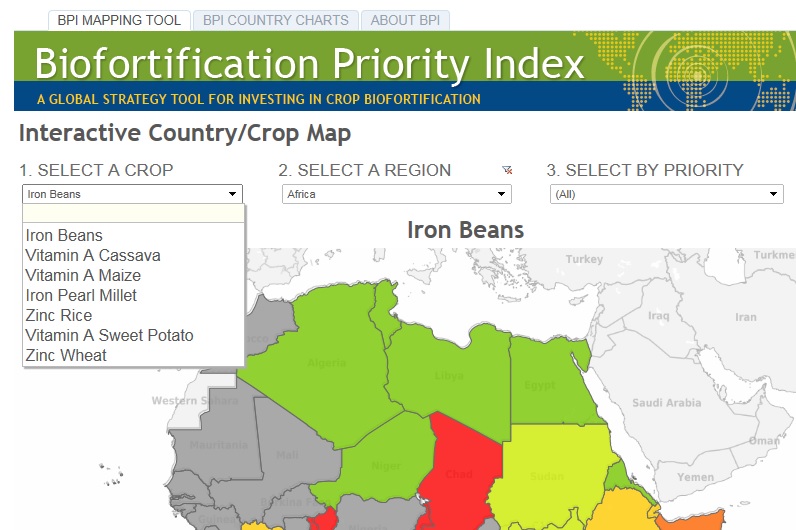A new interactive online tool is now available to guide stakeholders in deciding where, and in which biofortified crops, to invest. The Biofortification Priority Index (BPI) focuses on three micronutrients—iron, vitamin A, and zinc—deemed among the most limiting in diets worldwide. New varieties of seven staple food crops that contain more of these vitamins and minerals are now widely available. These include vitamin A cassava, maize, and orange sweet potato; iron bean and pearl millet; and, zinc rice and wheat.
The tool allows you to enter search criteria through three easy-to-use dropdown menus. Users can sort and view results on a color-coded map according to crop, region, and priority for investment. The results are ranked based on a combination of production, consumption, and micronutrient deficiency data.
The BPI will be useful to stakeholders in making investment decisions on biofortification that will have the highest payoff in reducing micronutrient deficiencies. Although it is currently limited to national-level data, the tool is expected to evolve over time with the addition of disaggregated country data.
The BPI comes at a time when biofortification is attracting increased recognition as a viable strategy to improve the nutritional status of populations dependent on staple food crops for sustenance. Many national nutrition and agricultural policies now integrate biofortification, while several countries and organizations have committed to supporting the scaling up and delivery of biofortified crops following the Second Global Conference on Biofortification in 2014.
More detailed explanations about the data and methodology behind the BPIare available in the full HarvestPlus Working Paper on which the tool is based.
